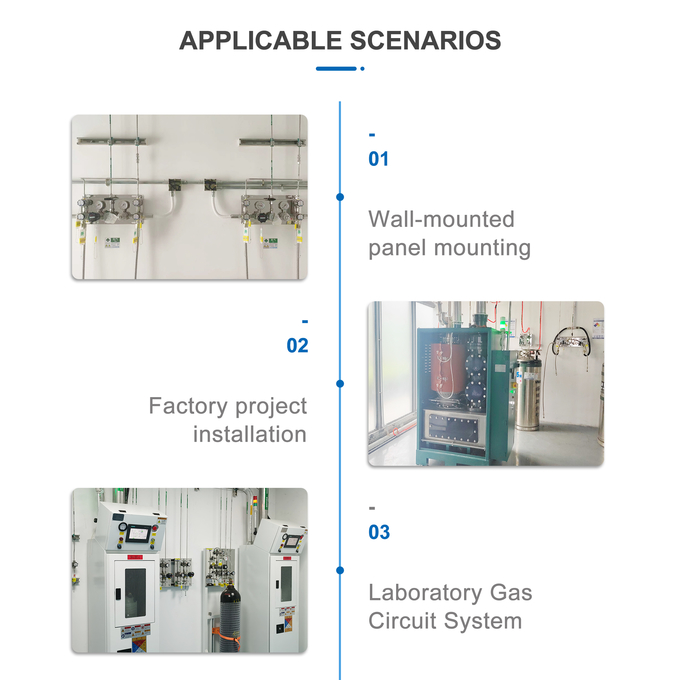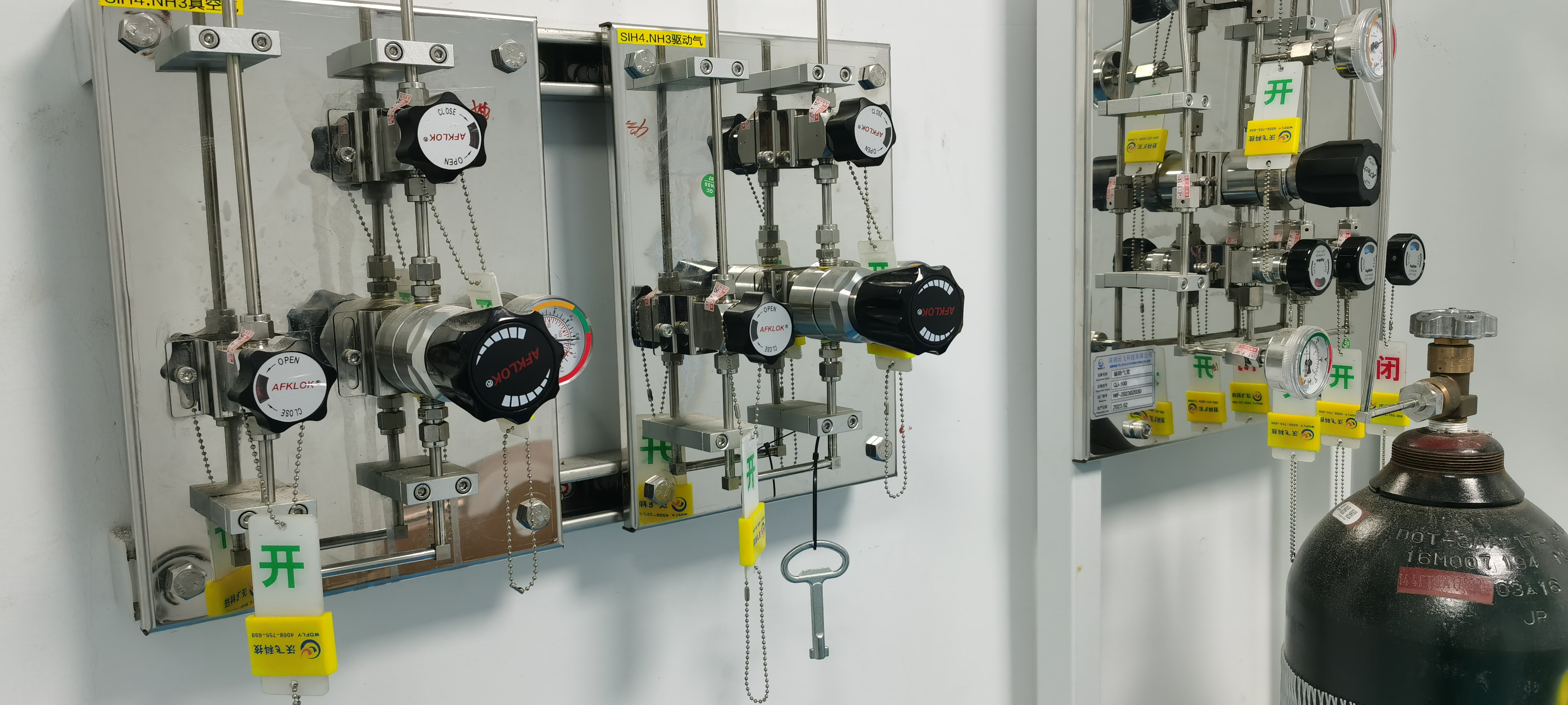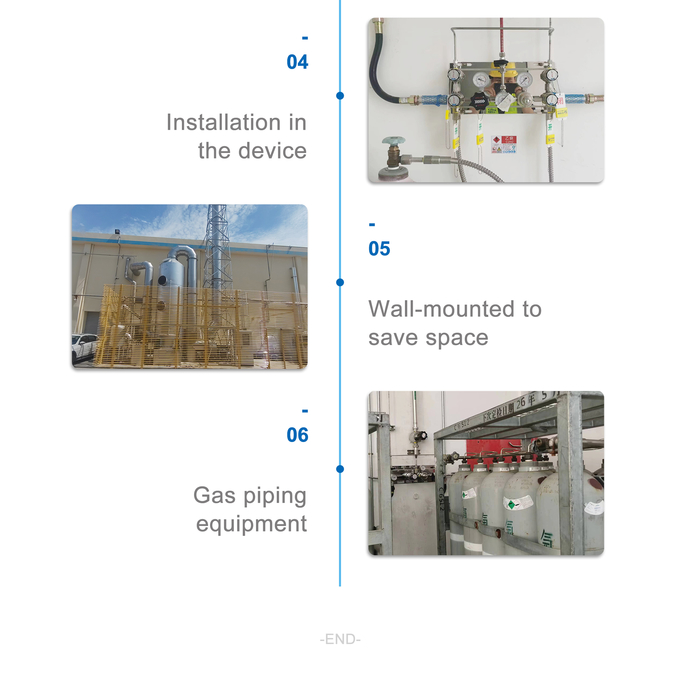Valve Selection Is An Important Part Of Proper Design And Maintenance Practices For Piping And Instrumentation Systems. If The Correct Valves Are Not Selected For A Particular Application, The User Unit May Be Exposed To Inappropriate Or Inferior Special Gas System Performance, Longer Downtime, And Unavoidable Safety Risks.

Valves Are Usually Selected During The Initial Stages Of A Special Gas Control System Design, And Throughout The System’s Life Cycle, Technicians Typically Follow Specifications To Better Valves And Most Other Components Using The Same Types Of Components Already Present In The System.
Selecting The Correct Valves From The Outset Is Therefore Very Important To Help User Units Avoid Premature Valve Replacement Later On.
How To Make The Right Choice?
The Technical And Purchasing Staff At The Customer’s Facility Can Follow The STAMPED Method, Which Takes Into Account Size, Temperature, Application, Media, Pressure, Ends Or Fittings, And Delivery.
Full Consideration Of Each Of These Operating Conditions Can Guide The Selection Of The Correct Valve To Be Used In The Speciality Gas System.
The Following Is A Detailed Description Of How STAMPED Is Applied To Special Gas System Design:

01 S – Size
The Size Of A Valve Determines Its Flow Rate And Needs To Correspond To The Desired Or Required Flow Rate Of The System. The Flow Coefficient (Cv) Of A Valve Expresses The Relationship Between The Pressure Drop Across The Valve And The Corresponding Flow Rate.
Valve Design Factors That Affect Cv Include The Size And Geometry Of The Flow Path; The Size Of The Valve’s Orifice Affects The Fluid Flow Through It. The Larger The Orifice, The Greater The Potential Flow Rate. The Orifices Of Different Types Of Valves Can Vary Greatly; For Example, A Ball Valve Will Provide Little Resistance To Flow, But A Needle Valve Will Restrict Or Slow Down The Flow Rate. These Should Be Considerations In Your Selection Process.
02 T – Temperature
The Operating Temperature Of The Valve Will Help Control The Temperature Of The Media In The System, And The Ambient Operating Temperature Of The Surrounding Environment. It Is Important To Note Whether The Temperature Of The Valve Will Remain Constant Or Change Frequently, And These Conditions May Affect Valve Selection Or The Frequency With Which Preventive Maintenance Needs To Be Performed.
Consider Temperature Fluctuations That May Cause Sealing Materials To Expand And Contract. In Addition, Metal Parts May Lose Strength At High Temperatures, Thereby Reducing Pressure Ratings, And It Is Necessary To Ensure That The Valve Has Been Thoroughly Tested Under Extreme Conditions.
03 A – Application
Consider What The Valve Is Required To Do In A System, Is It Required To Start Or Stop The Flow Of Media? Regulate Flow Levels? Control Flow Direction? Protect The Special Gas System From Overpressure?
Having A Clear Idea Of The Application Of The Valve In The System Will Guide You To A Clearer Choice Of Valve Type. Take A Simple Bi-Directional Ball Valve As An Example, Whilst Some Ball Valves May Offer Throttling, Most Should Not Be Used For Throttling Or Regulating Flow, But Should Be Used In Either Fully Open Or Fully Closed Condition, If Your Need Is To Throttling Or Regulating The Flow, A Needle Valve Or Metering Valve May Be A Better Choice.
04 M – Medium
Or To Regulate Flow, A Needle Valve Or Metering Valve May Be A Better Choice.
Careful Consideration Should Also Be Given To The Fluid Medium Within The System When Trying To Select The Correct Valve With The Proper Material Composition.
Ensure That The System Media Is Compatible With The Materials That Make Up The Valve Body, Seat, And Stem Shear, As Well As The Softer Materials Of The Gas. Failure To Do So May Result In Corrosion, Embrittlement Or Cracking, Which Can Pose A Safety Risk And Costly Production And Safety Problems For The User Unit.
As With Temperature, The Location Where The Valve Is To Be Used Should Also Be Considered. Is It Operating In A Climate-Controlled Environment, For Example Inside A Plant Or In A Heated Instrument Enclosure? Or Is It Used Outdoors, Exposed To Climatic Factors Such As Sunlight, Rain, Snow And Temperature Fluctuations Over A Long Period Of Time? Valves And Their Components Are Available In A Wide Range Of Materials. Remember To Select The Appropriate Valve In Relation To The Above Environmental And Climatic Factors In Order To Maximise The Service Life And Functionality Of The Valve.
05 P – Pressure
Pressure Is Another Important Consideration When Selecting A Valve.
There Are Two Types Of Pressure:
1. Operating Pressure: The Normal Working Pressure In The System.
2. Design Pressure: The Maximum Pressure Limit Of The Valve; Never Exceed The Design Pressure Of Any Special Gas System Component Except Under Controlled Test Conditions.
The Pressure Limit Of A Special Gas System Is Based On Its Lowest Rated Component – Bear This In Mind When Selecting A Valve. The Pressure And Temperature Of The Process Medium Have A Significant Effect On Component Performance. The Valves You Select Need To Withstand Pressure And Operate Over A Wide Range Of Temperatures And Pressures When Required. Design, Material Selection And Validation Are All Critical Aspects Of Valve Performance. It Is Also Important To Remember That Pressure And Temperature Have A Significant Effect On Each Other.
06 E – End Connections
Valves Come With A Variety Of Different End Connections. These May Be Integral Tube Fittings, Pipe Threads, Pipe Flanges, Weld Ends Etc. Although Not Traditionally Associated With The Construction Of A Valve, The Choice Of End Connections Is Critical To The Overall Construction Of The Valve And Its Ability To Maintain A Sealed System. Ensuring That The End Connections Are Suitable For The System Pressure And Temperature, And Are Of The Right Size And Material, The Correct End Connections Can Simplify Installation And Avoid Additional Leak Points.
07 D – Delivery
Finally, Having Considered All Of The Above Factors And Selected The Right Valve For Your Application, As With Any Other Factor, On-Time Delivery And Reliable Supply Is Important To Keep The Special Gas System Running And Efficient. As A Final Step In The STAMPED Approach, There Is A Need To Consider The Strength Of The Supplier, Their Ability To Meet The Demand When You Need The Part, And Their Ability To Work With You To Understand The Needs Of Your System.
The Above Is The STAMPDE Method Compiled By WOFLY (AFKLOK), We Believe That Through The Above Steps, The User Unit Will Have A Better Understanding Of How To Choose The Right Valve. If You Have Any Questions, WOFLY (AFKLOK) Is Also Very Welcome To Your Inquiries.

WOFLY (AFKLOK) In The Field Of Special Gas Applications For Thirteen Years, The Gas Application Industry Is Very Familiar With The Relevant Processes, And Has A Strong, Stable Supply Chain And Construction Technology Team, These Are Our Strong Backing, So That We Have The Strength And Determination To Provide The Best Quality, The Most Secure Full Set Of Gas Applications For The User Units.
Post time: Jun-04-2024